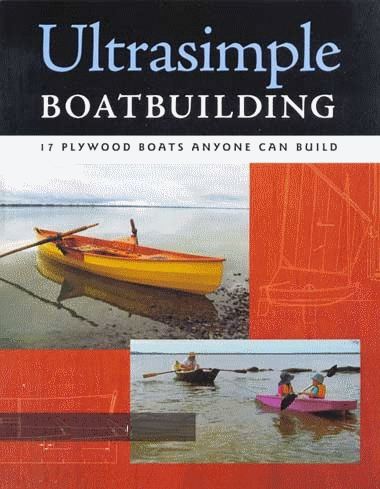Here is comment received regarding
Fleet:-
How much does she weigh?
What I like about flint is that the center of balance is over the center thwart making her easy to carry and light enough for this senior citizen to car top.Well, I cant tell you how much she weighs because we havent weighed her yet, but the material thickness is the same as on Flint and the area of plywood is only 8.4% higher, indicating an 8.4% weight increase. The Fleet shown in the pictures has a foredeck and inwales, but the standard Flint and Fleet have tank-tops on the foreward and aft buoyancy tanks, so it probably all evens out.Based on just the
plywood in the
bare hull, the weight of
Flint panels is 24kg(53lbs) and in
Fleet the same is 26kg(57lbs). The centre-of-gravity of the
hull panels (including transom without framing) is at 1.96metres forward of the aft perpendicular i.e. at the midships thwart near the aft edge.
The weight of any boat depends tremendously on the density of the materials used, and the attitude of the builder.
________________________________________________________________
In relation to my recent post on the virtues of the sprit rig with the jib set flying, Dennis Marshall writes: -
May I ask what the line is hanging from the peak of the sail?Dennis is asking about the light line which can be seen in a number of photos, running down from the head of the sail at the peak end of the sprit |
| The light line is just visible in this photo |
The line is a vang. I suggested that it be used in certain conditions when hard on the wind and when running free, to control the amount of twist in the sail, and (when running) to prevent the head of the sail from moving forward of the beam i.e. forward of a a line drawn at right angles to the centreline of the boat. If a sail moves forward of the beam, it is a sure invitation to a Death Roll.
The light line is run from the head of the sail near the peak of the sprit down to a thumb-cleat on the weather quarter and then to a little fairlead on the rudder head and then along the tiller to a small V-jamb cleat within easy reach of the helmsperson. When tacking or jibing, the line is flicked off the thumb-cleat and quickly moved to the one on the new weather quarter. It only requires a light tension on the line (vang) to haul the head of the sail in to reduce twist in the sail.














 French artist Julien Berthier created this boat. According to him, "Love love is the permanent and mobile image of a wrecked ship that has become a functional and safe leisure object".
French artist Julien Berthier created this boat. According to him, "Love love is the permanent and mobile image of a wrecked ship that has become a functional and safe leisure object".
